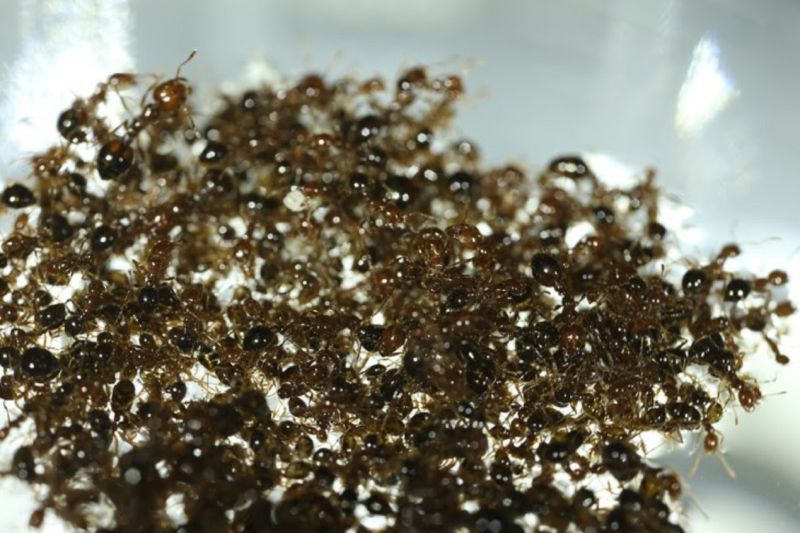The physics behind how fire ants band together into robust floating “rafts”

Enlarge / A spinning fire ant raft in David Hu's biolocomotion lab at Georgia Tech is an example of collective behavior. (credit: Hungtang Ko)
Fire ants can survive floods by linking their bodies together to form large floating rafts. Now researchers at Georgia Tech have demonstrated that fire ants can actively sense changes in forces acting upon the raft under different fluid conditions and adapt their behavior accordingly to preserve the raft's stability. Hungtang Ko described their work at a meeting of the American Physical Society's Division of Fluid Dynamics, held in Seattle just before the Thanksgiving holiday.
Fire ants (and ants in general) provide a textbook example of collective behavior. A few ants spaced well apart behave like individual ants. But pack enough of them closely together, and they behave more like a single unit, exhibiting both solid and liquid properties. You can pour them from a teapot like a fluid, or they can link together to build towers or floating rafts-a handy survival skill when, say, a hurricane floods Houston. They also excel at regulating their own traffic flow.
Any single ant has a certain amount of hydrophobia-the ability to repel water-and this property is intensified when they link together, weaving their bodies much like a waterproof fabric. They gather up any eggs, make their way to the surface via their tunnels in the nest, and as the flood waters rise, they'll chomp down on each other's bodies with their mandibles and claws, until a flat raft-like structure forms, with each ant behaving like an individual molecule in a material-say, grains of sand in a sand pile. And they can do this in less than 100 seconds. Plus, the ant-raft is "self-healing": it's robust enough that if it loses an ant here and there, the overall structure can stay stable and intact, even for months at a time. In short, the ant raft is a super-organism.
Read 7 remaining paragraphs | Comments